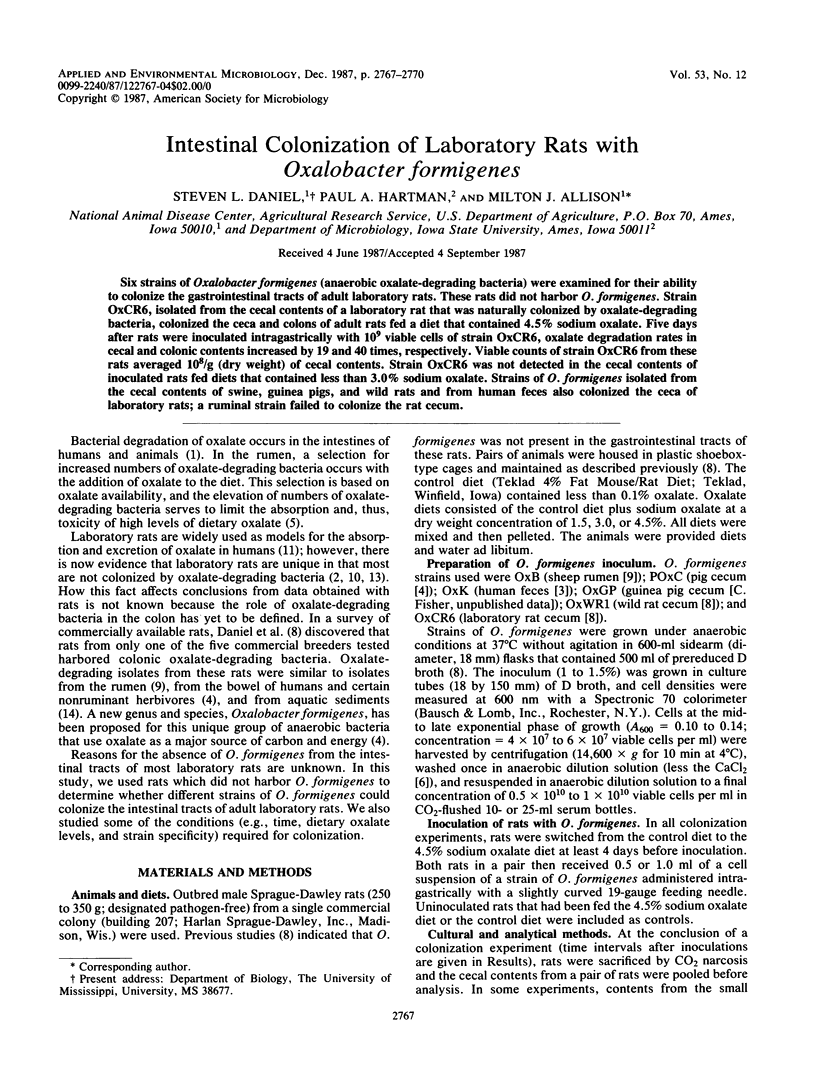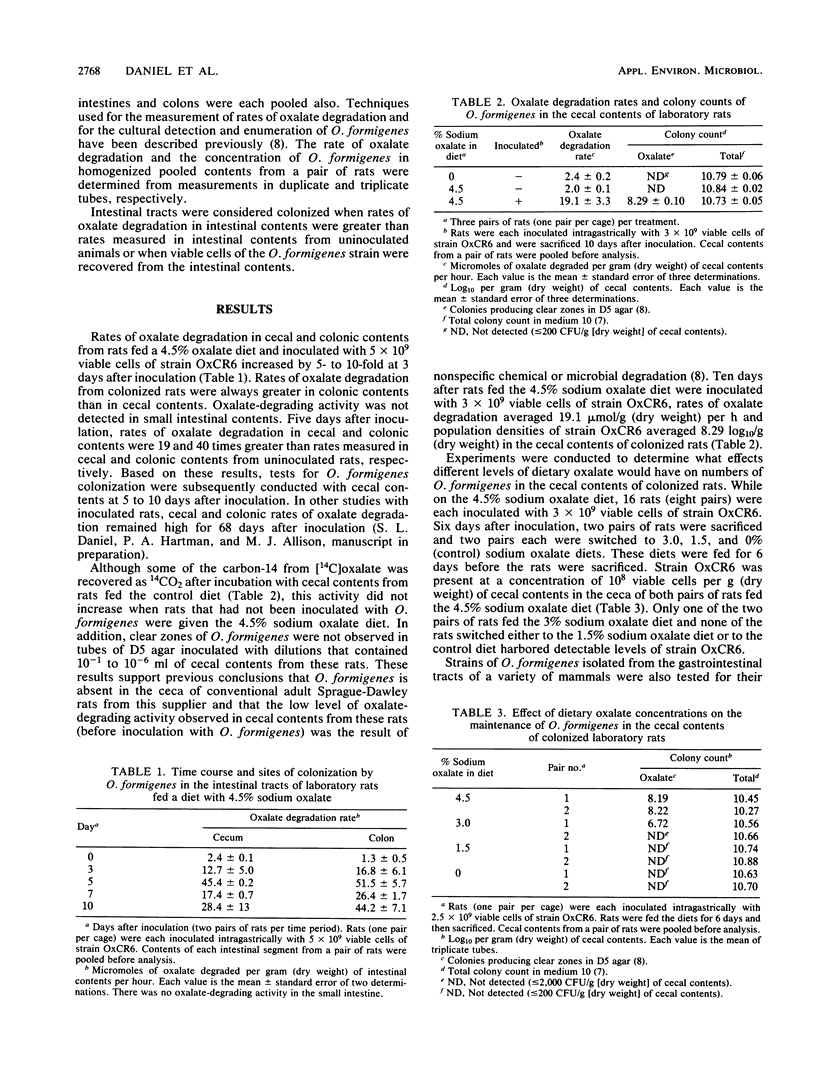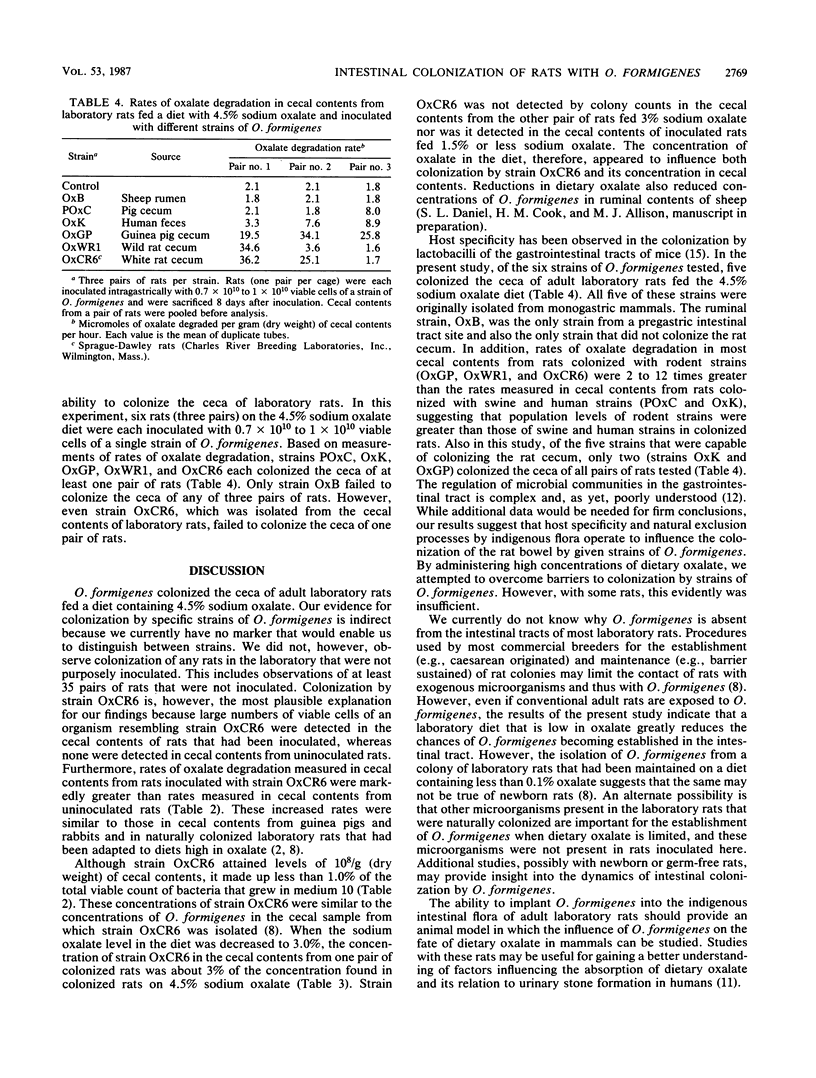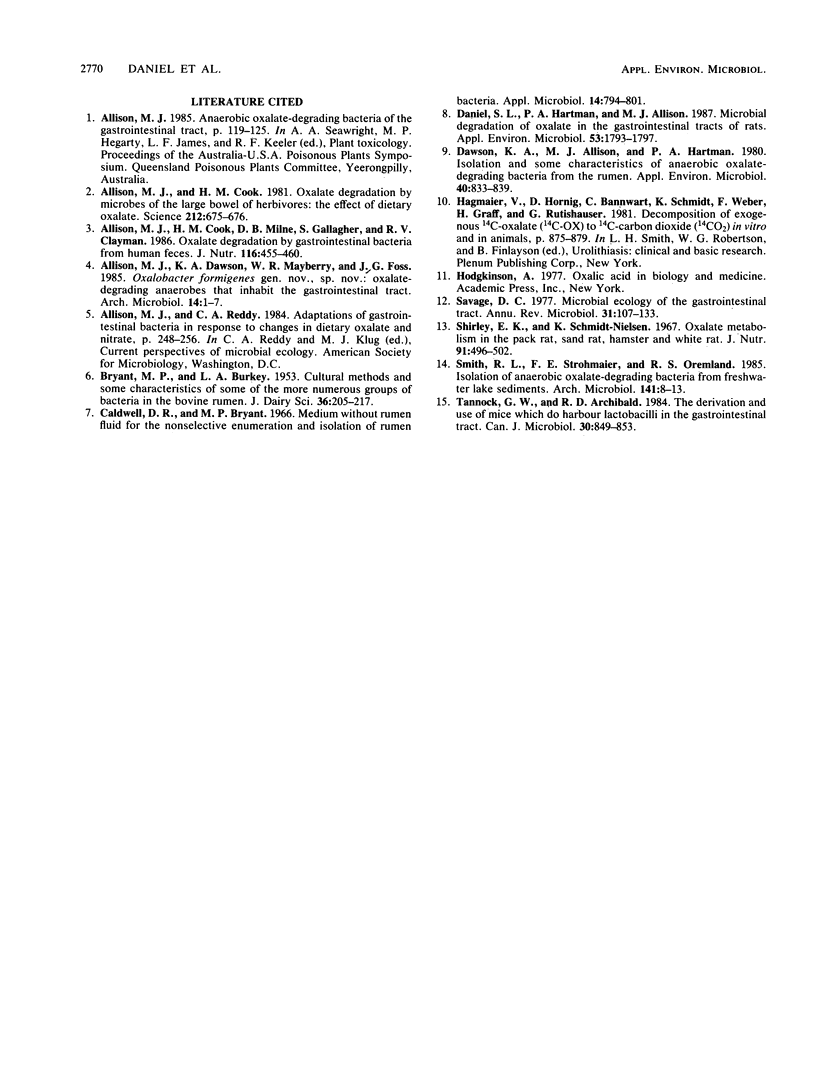Abstract
Six strains of Oxalobacter formigenes (anaerobic oxalate-degrading bacteria) were examined for their ability to colonize the gastrointestinal tracts of adult laboratory rats. These rats did not harbor O. formigenes. Strain OxCR6, isolated from the cecal contents of a laboratory rat that was naturally colonized by oxalate-degrading bacteria, colonized the ceca and colons of adult rats fed a diet that contained 4.5% sodium oxalate. Five days after rats were inoculated intragastrically with 10(9) viable cells of strain OxCR6, oxalate degradation rates in cecal and colonic contents increased by 19 and 40 times, respectively. Viable counts of strain OxCR6 from these rats averaged 10(8)/g (dry weight) of cecal contents. Strain OxCR6 was not detected in the cecal contents of inoculated rats fed diets that contained less than 3.0% sodium oxalate. Strains of O. formigenes isolated from the cecal contents of swine, guinea pigs, and wild rats and from human feces also colonized the ceca of laboratory rats; a ruminal strain failed to colonize the rat cecum.
Full text
PDF



Selected References
These references are in PubMed. This may not be the complete list of references from this article.
- Allison M. J., Cook H. M., Milne D. B., Gallagher S., Clayman R. V. Oxalate degradation by gastrointestinal bacteria from humans. J Nutr. 1986 Mar;116(3):455–460. doi: 10.1093/jn/116.3.455. [DOI] [PubMed] [Google Scholar]
- Allison M. J., Cook H. M. Oxalate degradation by microbes of the large bowel of herbivores: the effect of dietary oxalate. Science. 1981 May 8;212(4495):675–676. doi: 10.1126/science.7221555. [DOI] [PubMed] [Google Scholar]
- Caldwell D. R., Bryant M. P. Medium without rumen fluid for nonselective enumeration and isolation of rumen bacteria. Appl Microbiol. 1966 Sep;14(5):794–801. doi: 10.1128/am.14.5.794-801.1966. [DOI] [PMC free article] [PubMed] [Google Scholar]
- Daniel S. L., Hartman P. A., Allison M. J. Microbial degradation of oxalate in the gastrointestinal tracts of rats. Appl Environ Microbiol. 1987 Aug;53(8):1793–1797. doi: 10.1128/aem.53.8.1793-1797.1987. [DOI] [PMC free article] [PubMed] [Google Scholar]
- Dawson K. A., Allison M. J., Hartman P. A. Isolation and some characteristics of anaerobic oxalate-degrading bacteria from the rumen. Appl Environ Microbiol. 1980 Oct;40(4):833–839. doi: 10.1128/aem.40.4.833-839.1980. [DOI] [PMC free article] [PubMed] [Google Scholar]
- Savage D. C. Microbial ecology of the gastrointestinal tract. Annu Rev Microbiol. 1977;31:107–133. doi: 10.1146/annurev.mi.31.100177.000543. [DOI] [PubMed] [Google Scholar]
- Shirley E. K., Schmidt-Nielsen K. Oxalate metabolism in the pack rat, sand rat, hamster and white rat. J Nutr. 1967 Apr;91(4):496–502. doi: 10.1093/jn/91.4.496. [DOI] [PubMed] [Google Scholar]
- Tannock G. W., Archibald R. D. The derivation and use of mice which do not harbour lactobacilli in the gastrointestinal tract. Can J Microbiol. 1984 Jun;30(6):849–853. doi: 10.1139/m84-131. [DOI] [PubMed] [Google Scholar]


